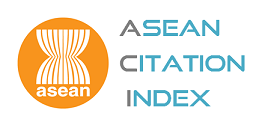Christianity, Ancestor Worship, and Cultural Revitalization among Akha Communities in the Upper Mekong Region
Keywords:
Akha, Christianity, Ancestor worship, Cultural revitalizationAbstract
Leo Alting von Geusau defines Akha ritual practices as a form of ancestor worship, arguing that the Akha ancestor system has been traditionally the backbone of the Akha world. Anthropologists have extensively investigated ancestorhood within various contexts, many of which have characterized ancestor worship as a source of authority, morality, and kinship. Economic changes, as well as the establishment of the first Christian missions among the Akha, have gradually marginalized ancestor worship among the Akha, with the knowledge and authority held by the ancestors increasingly declining.
However, a number of associations have emerged over the past two decades to work on behalf of Akha culture, and these movements have promoted the reconsideration of the role of ancestors. Some key representatives of these Akha associations during this period have moved around the borders of upper Southeast Asia and China, interacting with the wider, transnational Akha community. This paper introduces and describes the work of numerous associations that currently revitalize Akha culture and highlights the different meanings that the group attaches to Akha ancestors. The aim of this paper is to describe the rationale behind these associations’ attempt to restore ancestor worship. In addition to examining why ancestor worship occurs, this paper tackles the issue of “how” by referring to the practical manner by which a new centrality is being constructed for the Akha ancestors. Fieldwork confirms that on the one hand, Akha ancestors’ revitalization seeks to create a new transnational Akha identity; on the other hand, such process questions the categories of culture and religion in relation to both traditional belief systems and Christianity.
Downloads
Published
How to Cite
Issue
Section
License
The opinions and ideas expressed in all submissions published in Thammasat Review are solely that of the author(s) and do not necessarily reflect that of the editors or the editorial board.
The copyright of all articles including all written content and illustrations belong to Thammasat Review. Any individuals or organisation wishing to publish, reproduce and distribute a particular manuscript must seek permission from the journal first.








